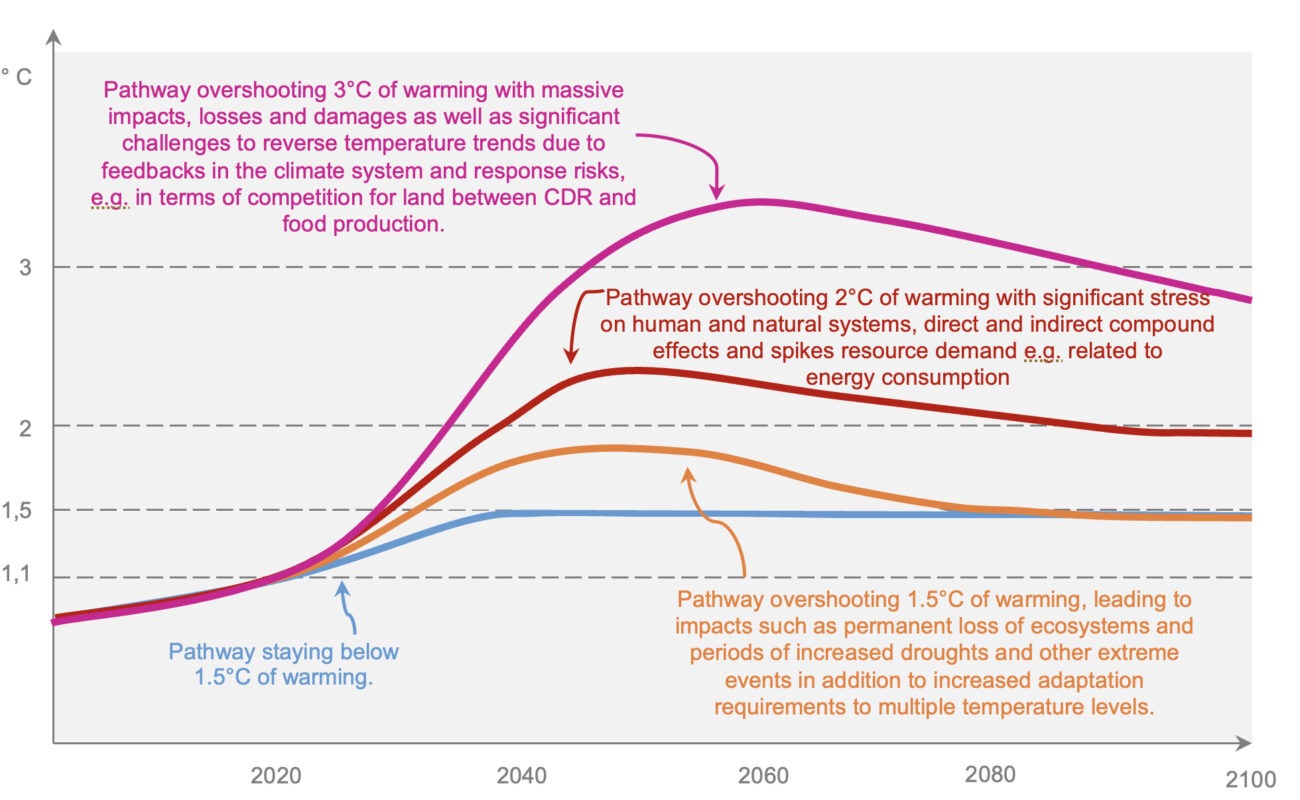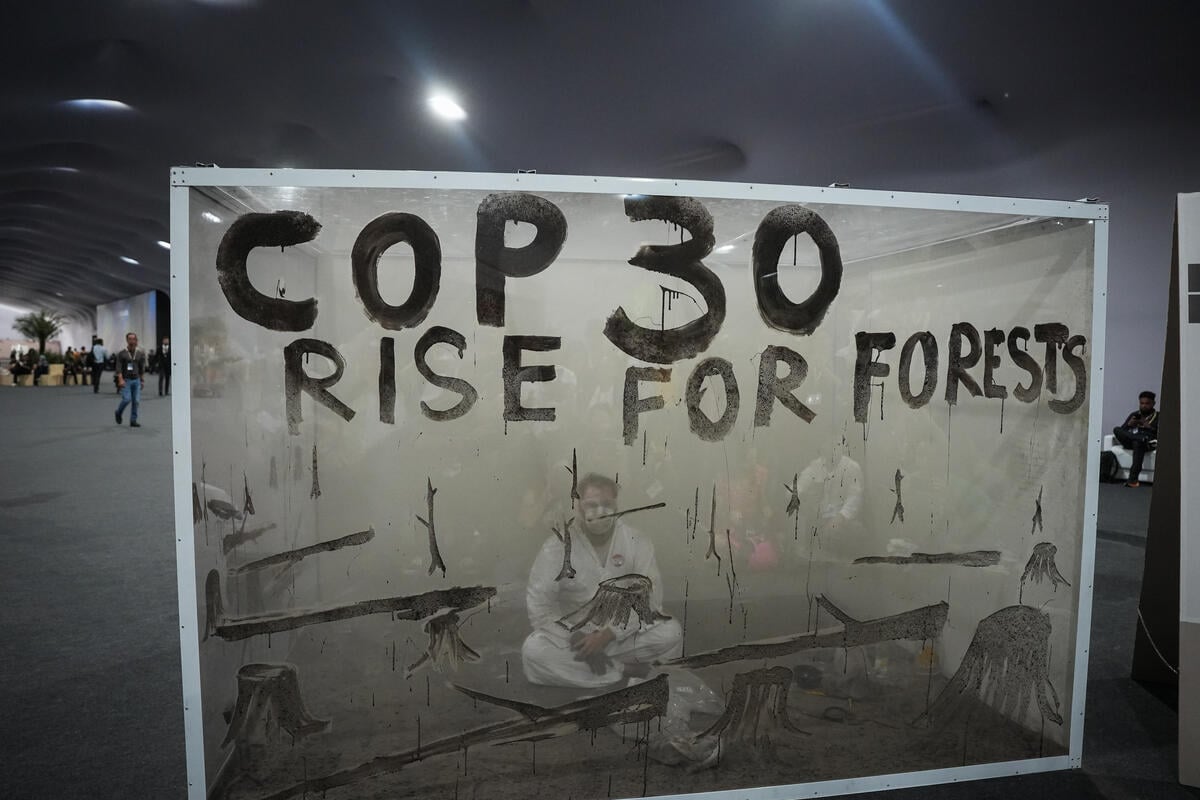As global temperatures appear likely to surpass the Paris Agreement’s 1.5 °C target by 2050—and remain above it for decades—researchers warn that governments and aid organizations aren’t prepared for what this “climate overshoot” will mean for people and societies.
A perspective published today in PNAS Nexus suggests that while scientists have made progress describing overshoot’s physical impacts, its humanitarian and social consequences need greater focus. The authors call for urgent action to build the evidence, data and policy links needed to plan for decades of heightened, uneven climate risk before that window closes.
“Climate overshoot is no longer a distant possibility,” said lead author Andrew Kruczkiewicz, senior researcher at the Columbia Climate School’s National Center for Disaster Preparedness.
“Understanding how overshoot will affect people’s lives and livelihoods—before, during and after disasters—must be part of climate planning, policy and finance. To do otherwise is increasingly irresponsible, with the cost of doing nothing potentially creating tensions with the humanitarian principle of ‘do no harm.’”
Five factors that will shape the human impacts of overshoot
The authors outline five interconnected factors linking Earth’s physical changes to social and humanitarian consequences.
Peak warming and duration. Even a short period of overshoot could lock in sea-level rise and other irreversible effects, while higher or longer warming peaks would magnify losses and strain the financial reserves that underpin recovery. Because systems like groundwater and ice sheets respond slowly to heat, some impacts could persist for centuries, even after temperatures stabilize.
Geography will shape who faces the greatest risks. The world won’t feel overshoot evenly: Regions warming faster than the global average are home to some of the world’s most socially and economically vulnerable populations. Limited capacity to prepare or recover means these communities may experience compounding crises, shifting where humanitarian needs are most acute and deepening inequities.
The timing of overshoot’s arrival. The rate of warming will determine whether systems can adapt in time. Rapid warming can outpace infrastructure and ecosystem adjustments, while slower change could allow for limited adaptation.
Adaptation limits and vulnerabilities. Overshoot could push some communities beyond the limits of feasible adaptation, creating cascading risks across food, water, health and energy systems. Implementing short-term fixes can lead to maladaptation, or solutions that solve one problem while creating others.
The path back down may bring new risks. Returning temperatures below 1.5 °C will require large-scale carbon dioxide removal, which could compete with agriculture, fisheries and livelihoods if these technologies repurpose land or ocean resources. Recovery paths with cycles of warming and cooling would also complicate disaster financing and planning. Policy discussions often fail to represent these variable recovery pathways, even though they would create different operational demands on the humanitarian sector.
Managing risks and planning for recovery
To avoid widespread system strain, the authors stress the need for stronger links among climate science, social data and humanitarian operations. They recommend expanding research on the social and economic dimensions of overshoot, improving data from vulnerable areas and strengthening scenario planning that anticipates irreversible change and immediate threats.
“In a period of overshoot, the course our social and climate systems take will depend on how we respond to new and unpredictable shocks,” said coauthor Joshua Fisher, a Columbia University research scientist and director of the Columbia Climate School’s Advanced Consortium on Cooperation, Conflict, and Complexity.
“Because those shocks are difficult to predict, institutions will need stronger coordination and collaboration to stay flexible and respond effectively.”
Governments can reduce the risks associated with overshoot by accelerating emissions cuts to limit its magnitude and by investing in adaptation and early-warning systems that help communities cope with prolonged heat, food security pressures and other impacts. Without such foresight, countries could underestimate humanitarian needs or put resources toward responses that no longer fit future conditions.
Overshoot will also challenge how societies think about time and preparedness. Infrastructure designed for one hazard may prove inadequate for another, and the regions most at risk now may not be the same in the future. For example, a city that’s fortified its coast against storm surge could later face other types of flooding if rainfall patterns shift, demonstrating why adaptation approaches must evolve as conditions change.
Recovery in an uncertain future
Even if global efforts succeed in bringing temperatures below 1.5 °C, recovering from overshoot won’t be straightforward. How temperatures drop will matter as much as how high they rise—gradual cooling could ease adaptation pressures, but erratic cycles of warming and cooling could increase instability. Addressing this variability requires flexible approaches to risk reduction, disaster response, and infrastructure investment and closer coordination between climate and humanitarian planning.
The authors emphasize that meeting the Paris Agreement target is essential, yet warn we must also prepare for the possibility of temporarily exceeding it. Planning for the distinct phases of overshoot is not about accepting failure, but about anticipating change and protecting those most at risk.
The article’s coauthors are Zinta Zommers, Perry World House, University of Pennsylvania; Joyce Kimutai, Kenya Meteorological Service and Imperial College London; and Matthias Garschagen, Ludwig-Maximilians-Universität München.
Source link
Columbia Climate School news.climate.columbia.edu


